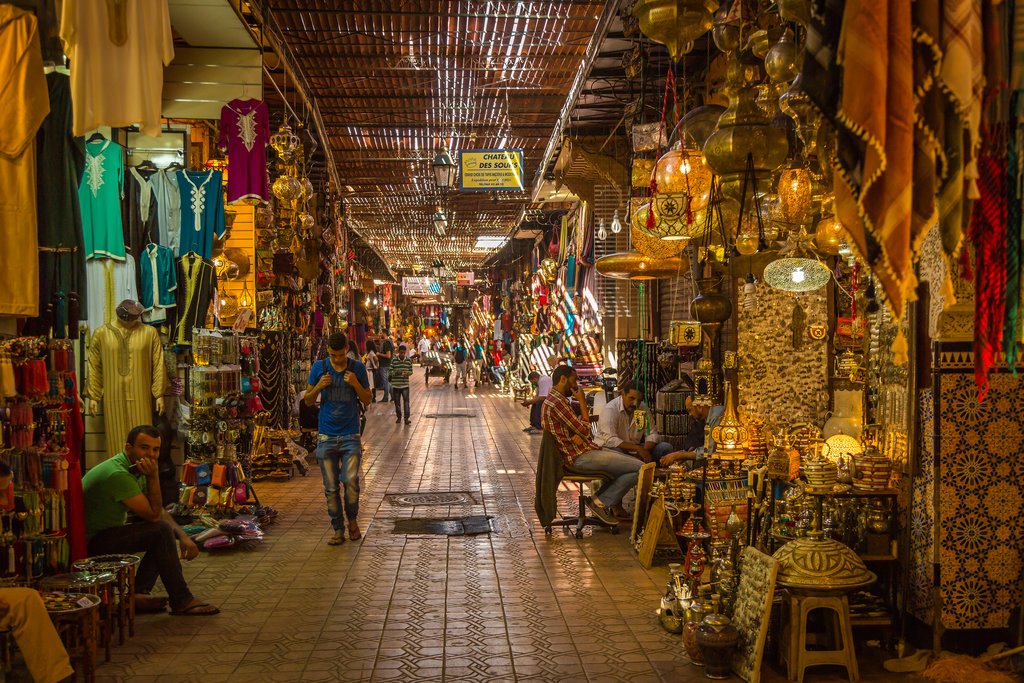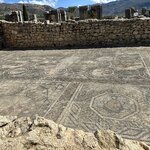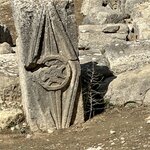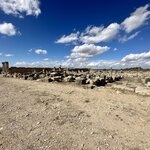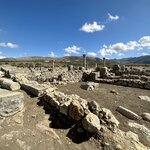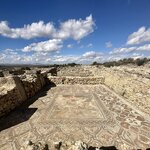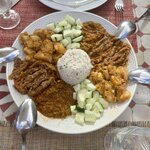Highlights
- Admire the intricate tilework of Meknes' Mausoleum of Moulay Ismail
- Enjoy the sunset overlooking the "blue city" of Chefchaouen
- Explore souks, tanneries, and artisan workshops in medieval Fes
- Discover desert landscapes featured in your favorite films and series
- Sleep under the stars in a desert tent or an old fortified ksar
Brief Itinerary
| Day | Highlights | Overnight |
|---|---|---|
| Day 1 | Arrive; Evening in Casablanca | Casablanca |
| Day 2 | Hassan II Mosque and historic Meknes | Meknes |
| Day 3 | The Blue City of Chefchaouen | Chefchaouen |
| Day 4 | Chefchaouen to Fes | Fes |
| Days 5-6 | Fes: Exploring the Imperial City and medieval Medina | Fes |
| Day 7 | Middle Atlas: Erfoud, Merzouga and the Sahara | Erg Chebbi |
| Day 8 | Desert adventures, Rissani market, and Todra Gorge | Tinerhir |
| Day 9 | Dades Valley, Ouarzazate, and Aït Benhaddou Kasbah | Aït Benhaddou |
| Day 10 | Tizi n'Tichka Pass over the High Atlas to Marrakech | Marrakech |
| Day 11 | Marrakech: Exploring the Red City | Marrakech |
| Day 12 | Depart |
Detailed Itinerary
Day 1: An evening in Casablanca
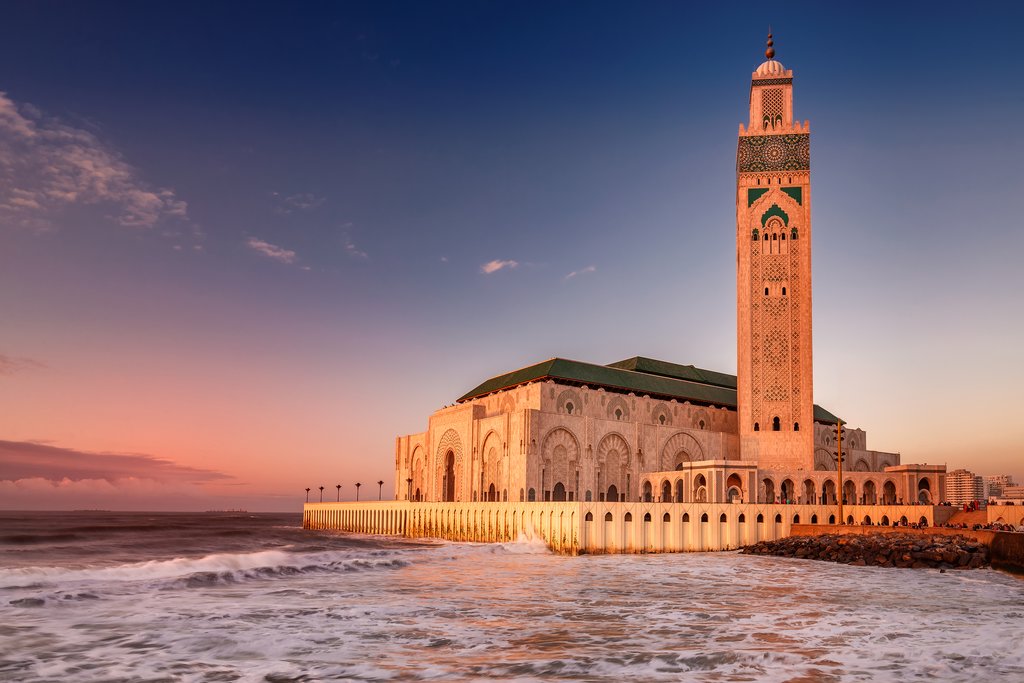
Welcome to the western coast of Morocco! Arrive in Casablanca and transfer to your hotel. Depending on your flight details, you may have time to explore your surroundings. Take a stroll along the Boulevard de la Corniche, the beach promenade that follows the Atlantic (often referred to as Morocco's 'Miami') to the Hassan II Mosque. Though tours of the interior are only offered in the morning, take advantage of the timing and watch the sunset behind the architectural marvel. Grab a bite in Rick's Café, a restaurant, bar, and café recreated to reflect the bar in the movie classic, Casablanca.
Day 2: Hassan II Mosque and historic Meknes

Casablanca is a modern, commercial capital of Morocco, and is home to the stunning Hassan II Mosque. It sits on an outcrop over the Atlantic and has a 690 feet (210 m) minaret—the tallest structure in Morocco and the tallest minaret in the world! It is estimated the courtyard can hold 80,000 worshipers, with room for 25,000 inside. What makes this mosque unique is that it is one of the few mosques in the country non-Muslims can enter. Join a morning tour and admire the exquisitely ornate artisanship: hand-carved stone and wood, intricate marble floor detailing, and gilded cedar ceilings.
Leave the coast behind and continue eastward to Meknes, for an introduction to your first historic imperial city—a smaller, less busy version of Fes where shopkeepers are not as pushy to make a sale. Discover the impressive Bab al-Mansour gate and the Mausoleum of Moulay Ismail in the Ville Impériale (Imperial City). Explore the medina (old quarter) and wander its souks (markets) before visiting the Madrasa Bou Inania (14th century). A beautiful example of Islamic architecture, the madrasa (Islamic school) offers nice views from its rooftop. Be sure to check out Dar Jamaï, a palace turned museum.
Day 3: The Blue City of Chefchaouen

After breakfast, head north a short distance to the impressive Roman settlement of Volubilis. A UNESCO World Heritage Site, Volubilis is a sprawling complex that has remained incredibly well preserved for centuries. A thriving city in its day, it was founded in the 3rd century BCE and was once one of the most remote parts of the Roman Empire, before it was abandoned nearly one thousand years later. Marvel at the merchant homes and their visible heating systems underneath, the temples, and the nearly intact colorful mosaics in situ, including the Labors of Hercules.
Carry on north and watch the landscape change from flat plains and rolling hills to the rocky terrain of the Rif Mountains. Known as the "Blue City," Chefchaouen is made up of narrow, winding streets and blue-washed buildings, enjoy the relaxed atmosphere and friendly locals. Spend your time in the compact medina along the northern hillside and enjoy a meal in Plaza Outa el Hammam, before touring the kasbah (old fortification). As the day draws to an end, make your way to the abandoned Spanish Mosque to enjoy one last view over Chefchaouen as the sun sets behind the mountains.
Day 4: Chefchaouen to Fes

Rise early to snap unobstructed photos of the blue-hued streets before you make your way south to your second imperial city, Fes. With its impressively large and complicated medinas, Fes is a city worth getting lost in. Before venturing into the medina, take the time to visit the Merenid Tombs located just north of the city and enjoy the all-encompassing view of historic Fes and the surrounding area. You may even see leather hides drying on sun-warmed rocks. Descend the hill and enter into Fes el Bali through the well-known Bab Boujeloud gate to find a café for a late lunch.
Continue exploring Fes at your leisure before returning to your traditional riad for a warm meal and settle in for the evening.
Chat with a local specialist who can help organize your trip.
Days 5: Fes: Exploring the Imperial City and medieval Medina

Fes is the oldest of the four Imperial Cities in Morocco and perhaps the most interesting and exciting to explore. It has the most complete medina in the Arab world and is relatively untouched since it was founded over 1000 years ago. Often considered the country's cultural capital, it is made up of three parts, two medina quarters, Fes el Bali and Fes el Jdid, and the more modern, French colonial influenced, Ville Nouvelle. Meet your guide and spend a half day learning about the history and culture as you navigate the narrow streets of the medinas.
Start in Fes el Bali at the Bab Boujeloud gate and enter the main thoroughfare of Talâa Kebira. Notice the Spanish and Tunisian influenced architecture as you make your way past shops and souks. One of the most unique sights in the old Medina is the tanneries and Chouara Tannery is no exception. Next, climb to the rooftop of a nearby leather shop for a better view of the 11th-century stone pots filled with dye and men at work still using centuries-old techniques.
Next, make your way to the 14th-century Al Attarine Madrasa, a beautiful example of Moroccan architecture and artisanship showcasing intricate zellij tilework. From there, find your way to one of the oldest still-operating universities in the world, Al-Qarawiyyin University (859 CE) next to the Al-Qarawiyyin Mosque. Though the mosque is only open to Muslims, there are a few places where you can glimpse inside to its decorated interior. Cooking enthusiasts may also wish to join a cooking class and learn how to prepare a typical Moroccan meal before retiring for the evening.
Day 6: Fes: Museums, Ceramics and Tile Collective, and gardens

Today, visit the Batha Museum. Housed in a 19th-century palace, the Museum is home to a collection of traditional Moroccan arts and crafts, including carved wood, zellij, and local pottery (its highlight). Spend time in the Andalusian-style gardens before walking to the Mellah (old Jewish quarter and cemetery). Take advantage of its location for a stunning panoramic photo of the city. Continue south to Ville Nouvelle and discover the dramatic change in architecture.
Tour a Ceramics and Tile Collective to learn how local artisans make wares, from shaping the clay to painting the designs. As well as watch the tile masters at work: fitting together small pieces of tile to form intricate mosaics. Return toward Fes el Bali, stopping along the way in Jnan Sbil (Bou Jeloud Gardens)—a halfway point between the mellah and Bab Boujeloud. Spend some time relaxing in the gardens' grandeur and cool off in the central fountains or beside the lake.
Day 7: Middle Atlas: Erfoud, Merzouga and the Sahara

Start your day early and travel south toward Merzouga to arrive at the Sahara dunes for a sunset camel ride. Along the way, you will climb up an elevation of 7,146 feet (2,178 m) over the Col du Zad pass and through the cedar forests of the Middle Atlas mountains. Enjoy sightings of the local Barbary macaque monkeys before stopping for lunch in Midelt (the 'apple city'), relishing the nearby Moulouya River. Continue over the Tizi n'Talremt pass and into the Ziz Valley, known for its hidden oases and palm tree clusters. Along the road, you will see many fortified houses known as ksars—built to protect precious wares, including gold, salt, and spices.
Continue on to Erfoud, known for its date festival and fossil mining. Here you can visit a local collective to learn more about the process and meet some local artisans. End your day at Erg Chebbi, an extensive sea of sand dunes covering an area of 13.5 square miles (35 square km). Never stationary, the massive dunes shift and travel depending on the changing wind! Upon reaching Merzouga, switch gears and ride your camel through the dunes to your already-prepared-for-you camp. Climb a nearby sand dune to watch the sunset before returning to camp for a delicious dinner, relaxing by the campfire.
Day 8: Desert adventures, Rissani market, and Todra Gorge

Wake early to catch a desert sunrise, then visit nearby desert villages or enjoy desert adventure sports such as sandboarding or an ATV tour. From there, visit nearby Khemliya, a typical Saharan village, and experience traditional drumming music and dancing before taking a short walk around the village. Leave the dunes behind and stop in the market town of Rissani, entering through its impressive gate. Known for its livestock auction it's worth your time finding the 'donkey parking lot' to delight your senses.
Continue on to Tinerhir. This desert town offers awesome views of neighboring towns hugging the length of the extensive river oasis (30 miles or 48 km of palm trees). Stop at today's final destination, the Todra Gorge. Almost 1000 feet (305 m) high and carved by the Todra River through red limestone, here you can enjoy a leisurely walk in and around the gorge and relax in the cool waters of the shallow river below.
Day 9: Dades Valley, Ouarzazate, and Aït Benhaddou Kasbah

Travel along the Valley of a Thousand Kasbahs to Morocco's most famous kasbah, Aït Benhaddou. Pass through the Dades Valley and stop in Kela'a M'gouna to admire the cultivated rose bushes. Visit a rose collective to see the process of converting rose petals into rose water and oil. As you continue west, you may want to stop in Ouarzazate, the movie capital of North Africa to discover how its nearby regions have been featured in movies, including Lawrence of Arabia, Gladiator, and Black Hawk Down. Join a movie studio tour and visit the Musée du Cinema to learn more about the filmmaking process and history of the area.
Spend the afternoon exploring Aït Benhaddou, a UNESCO World Heritage site. The old ksour dates from the 11th century when it held an important position along the trans-Saharan trade route. Settle into your accommodation in the old town, and wander the alleys and passageways in the late afternoon after the day crowds have left. Climb up to the old Granary—an excellent vantage point to see the kasbah and surrounding area. Game of Thrones fans may want to trek down to the river to see the gates featured in the popular HBO series. Long after the day crowds have left, enjoy a quiet dinner overlooking the valley.
Day 10: Tizi n'Tichka Pass over the High Atlas to Marrakech

Leave Aït Benhaddou behind to begin the ascent over the High Atlas mountains. Spot Mount Toubkal, the mountain range's highest peak, at 13,671 feet (4,167 m). Stop in Taddert to visit an Argan Oil Cooperative and learn how the argan nut and fruit are processed for various uses (and try some samples). As you descend the High Atlas, you will notice a dramatic change in the climate and landscape as the rocks change to foothills and into flat plains. Soon you will be a part of the noise and bustle of Marrakech.
After a long day on the road, settle into your hotel and spend the rest of the afternoon as you like. In the early evening, Jemaa el-Fna Square comes alive with musicians, performers, snake charmers, games, and food stalls, a catch-all of entertainment! If you want to enjoy the spectacle from a distance, choose one of the many cafés surrounding the square and enjoy a cup of mint tea and a meal.
Day 11: Marrakech: Exploring the Red City

Nicknamed the "Red City" for its 1000-year old red sandstone city walls and buildings, Marrakech is a major economic center. Marrakech has Berber rather than Arab roots and was once an important trading capital for tribes of the Atlas mountains. Orient yourself around Marrakech's bustling Jemaa el-Fna Square: the souks are to the north, the Koutoubia Mosque and Gardens to the west and the kasbah area with the Saadian Tombs, Bahia Palace, and El Badi Palace are to the south. In the Ville Nouvelle, you will find the Majorelle Gardens.
For a unique way to tour the medina, board a calèche (French for horse-drawn carriage) and begin to adjust to your surroundings. Notice the fondouks—medieval inns that provided merchants and travelers with shelter and supplies. Today some have been converted into residences or large shopping areas and workshops that you can explore. Find your way to the Koutoubia Mosque and take a respite from the heat in its gardens amid fountains and palms. Though the mosque cannot be entered by non-muslims, it's worth checking out its 12th-century foundations and minaret.
Indulge your senses as you explore the complicated labyrinth of souks, tucked behind ordinary restaurants and shops. Check out Souk el Attarin, Souk Chouari, and Souk Smata for a selection of spices, woodwork, and babouche (traditional Moroccan slippers). Visit Souk des Teinturiers or the dyers’ souk to see how cloth and yarn are dyed using traditional methods. Next, admire the fine example of Moroccan Islamic architecture of the Ben Youssef Madrasa, a 16th-century Koranic school, and note the ornate detail of its interior: carved cedar ceilings, sculpted plaster, and zellij tiling.
Day 12: Departure from Marrakech

Depending on your flight details you may wish to explore the kasbah area south of Jemaa el-Fna. Visit the sunken gardens of the 17th-century El Badi Palace as you work your way through the Mellah and to the 19th-century Bahia Palace. Visit the only surviving Almoravid monument, the 12th-century Almoravid Koubba, before spending some time in the Marrakech Museum, housed in the 19th-century Dar Mnebbi Palace, and enjoy modern and traditional Berber and Moroccan art.
